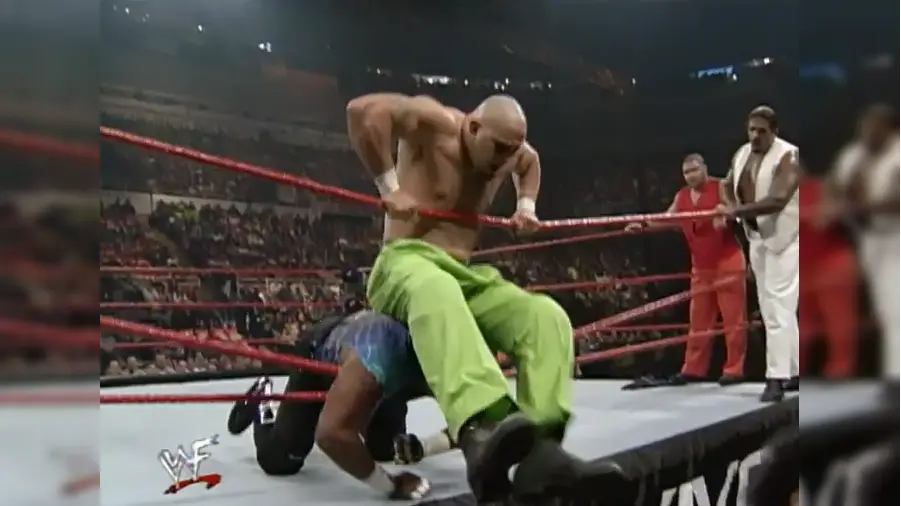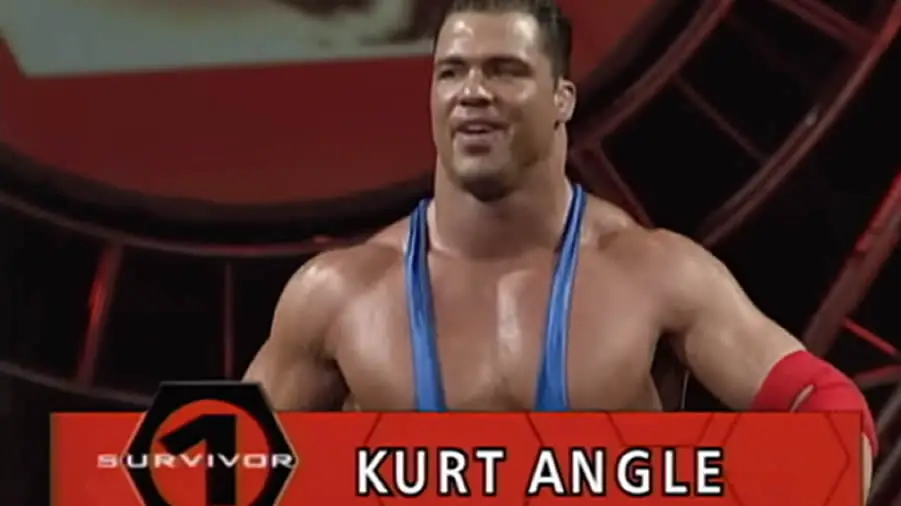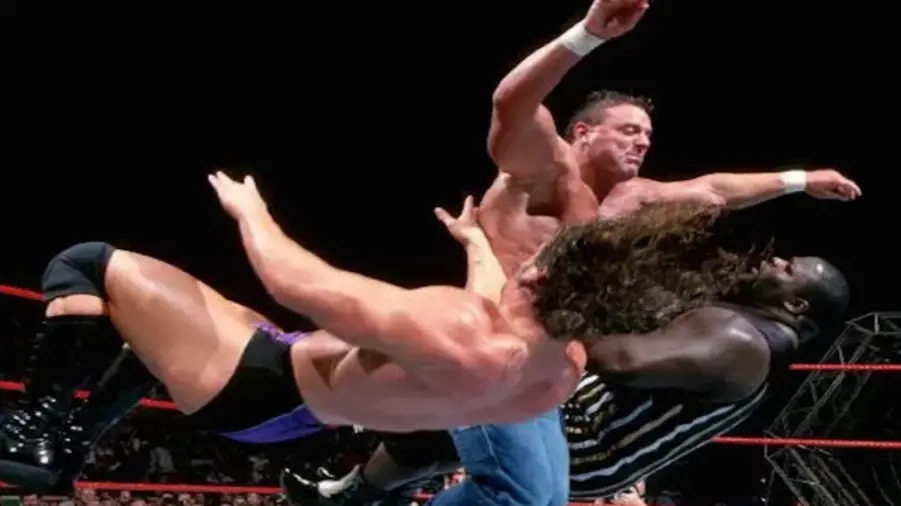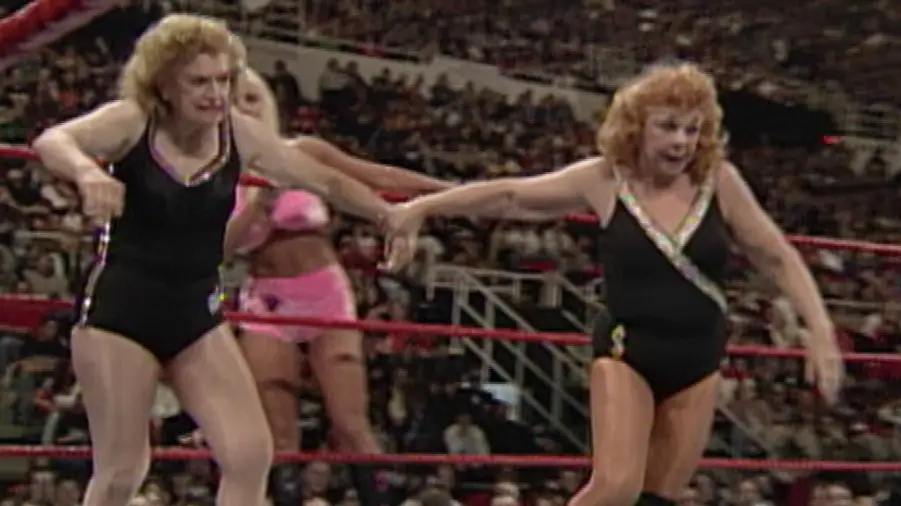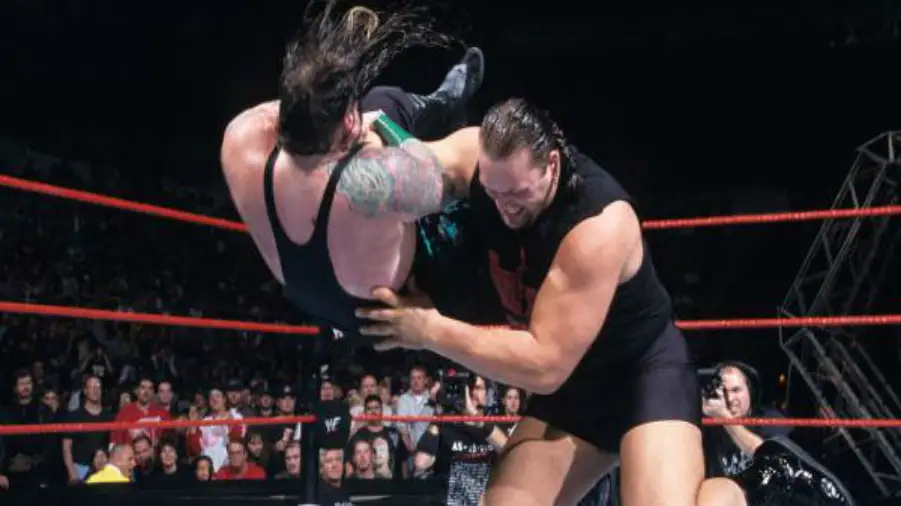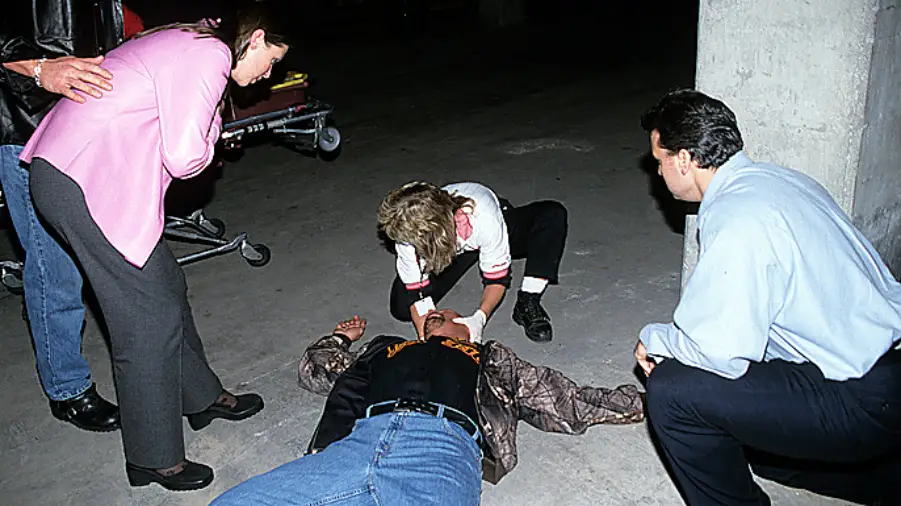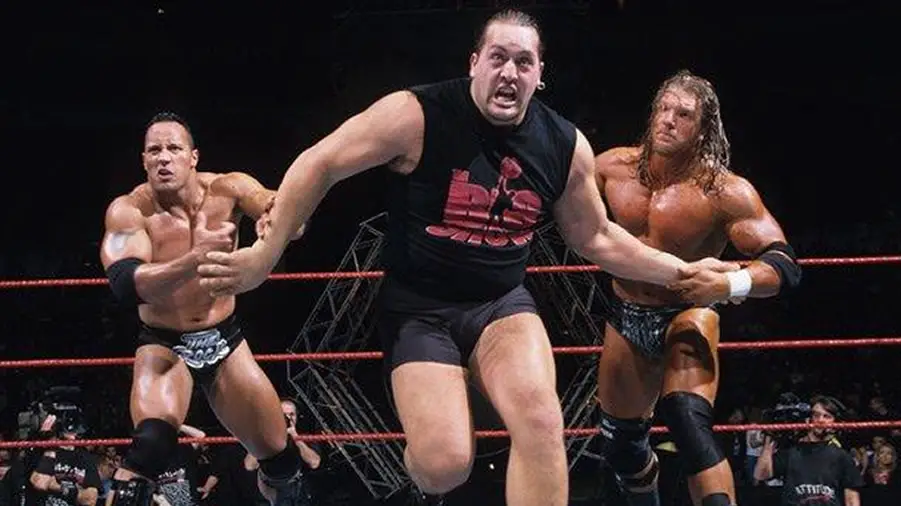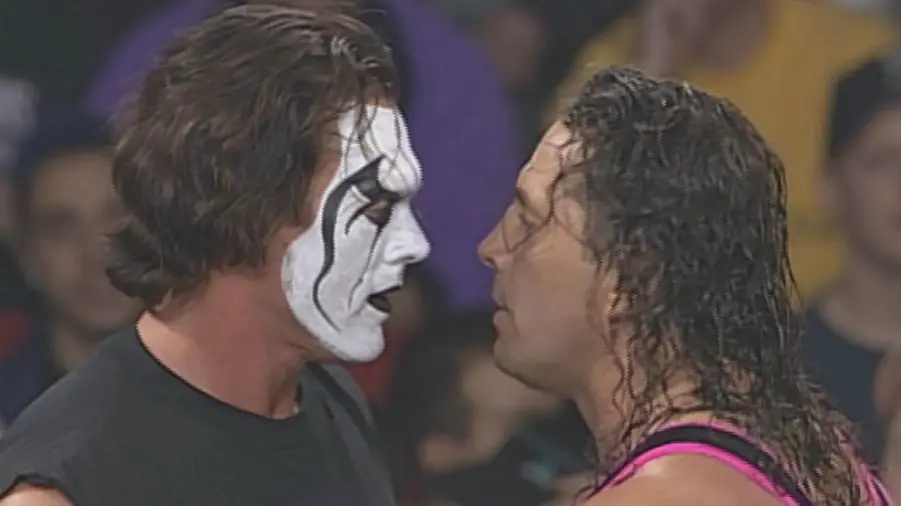10 Things We Learned From WWE Survivor Series 1999
The one where Stone Cold Steve Austin was hit by a car...
The 1999 Survivor Series hasn't exactly proven to be a memorable show, at least as far as the matches go. Sure, it's known as the event in which Big Show captured the WWE Championship for the first time in his career, but beyond that, the wrestling is but an afterthought. Even resorting to the classic Survivor Series format for a handful of matches didn't prettify the show all that match - instead, it simply exposed the lack of depth among the roster.
Where the event proves notable is in the whodunnit angle that began to take form that night. Stone Cold Steve Austin gets led to his near-doom in the Joe Louis Arena's parking garage, when whilst giving chase to Triple H, a speeding car plows into the beloved Texas Rattlesnake, sending him tumbling over the hood. The identity of the driver will remain a mystery for nearly a year.
As much as it pains me - a Survivor Series format apologist and defender - to say it, the 1999 event (even with its array of eliminator bouts) just wasn't anything to sink your teeth into. While a major angle kicked off, and a surprise title change took place, it's really nothing more than "just a show" otherwise.
10. Math Checks Out
Indeed, the elimination match concept is well-represented on this show, featuring four different matches where teams work to deplete the opposition in a classic battle of attrition. Only one of the four matches was really a quality outing, that being the one where Edge, Christian, and The Hardy Boyz duked it out with Too Cool and The Holly Cousins. Otherwise, the survivor matches were all either accelerated angle advancement or tedious time killers.
As of 2018, the 1999 event is the last Survivor Series to have at least four elimination matches on it. Although the roster has expanded to the point where WWE could probably do a dozen five-on-five matches in a six hour show (let's not encourage them), WWE has chosen to book Survivor Series mostly as a normal pay-per-view, with an eliminator or two thrown in for nostalgia's sake.
9. Obtuse Angle
Okay, I exaggerated a bit in the intro when I said not much else happened on this show, because how does one overlook the debut of your Olympic hero and mine, Mr. Kurt Angle? The milk-drinking, gold medal-wearing wrestling machine took part in his first televised WWE match, easily defeating Shawn Stasiak, but it was far from the archetypal Angle performance - he was somewhat dull and vanilla, and Detroit called him out on it.
According to Angle in a 2017 interview, this portrayal of him as a bland mama's boy was 100% intentional. Vince McMahon wanted Angle to be a "by design" Rocky Maivia, in that he would be presented as a squeaky-clean All-American, the antithesis of what an Attitude Era crowd would get behind. With his morals and his cheerful aloofness at hand, Angle became a heel sensation almost instantly, so Vince's idea hit its mark.
8. The Evils That Men Do
There have been some pretty bad Survivor Series matches, like the 1991 bout pitting teams captained by Jim Duggan and Colonel Mustafa, as well as the 2014 women's match. Foraging in the cellar with those bouts is the match pitting Val Venis' quartet against British Bulldog and The Mean Street Posse. With all due respect to the men involved, this was about as thrown together as a last-minute Halloween costume.
To date, it is the only Survivor Series elimination match that was comprised entirely of heels. Though Venis, and teammates Mark Henry and Steve Blackman, would all have forthcoming face runs, they were still firmly on the heel side of the fence at the time of the match. And even then, it's clear-heel Bulldog that has to valiantly fight back from down four-on-one after the Posse all get dumped in short order. Strange times.
7. Forever Young
Writing this on the heels of a very good Evolution pay-per-view, the WWE's women's wrestling scene of 1999 was comparably in the stone age in 1999, and the contrast could not be more explicit. And 'stone age' may be an apt term, since two of the participants in the eight-woman tag at the 1999 Survivor Series were 76 years old at the time. Mae Young, one of those septuagenarians, was probably the best performer on her team, even at that advanced age.
This would mark the only time Mae Young wrestled in an official pay-per-view match in her long career. Said match lasted less than two minutes, and it was probably for the best that it wasn't a full-scale elimination match. It would take a little longer before the division would bolster its ranks, but 1999 didn't exactly represent banner times.
6. Life Moves Quickly
Technically, an irate Big Show was responsible for making seven eliminations in one match. He refused to let teammates Blue Meanie and Kai En Tai join him, so he assaulted all three men before making his entrance. Then he swiftly mauled Mideon, Albert, and Viscera in succession, causing opposing captain, Big Boss Man, to run off, choosing discretion as the better part of valor.
The match itself holds the record for fastest elimination bout in the history of Survivor Series - a brisk one minute and 26 seconds. All three pinfalls occurred in under a minute, with Viscera succumbing third to the Chokeslam at the 55-second mark. Boss Man was officially counted out 31 seconds later, not wanting Big Show to get revenge over the whole "tampering with a dead body at a funeral" gag.
5. First Time Ever
WWE throws around words like "historic" and "first time ever" when convenient in their promotion of the Women's Revolution, two decades after Chyna had made a profound impact in the world of women's wrestling - it's just that the barriers she broke were usually in a ring occupied by men. Chyna became the first (and only) woman to win the IC title when she defeated Jeff Jarrett in October 1999, and made further history a month later.
Chyna became the first person, regardless of gender, to defend the Intercontinental title at any Survivor Series, when she faced off against Chris Jericho at the 1999 event. Never before in the first 12 events was the gold ever defended. At 10 of the first 12 shows, the reigning champ was in an elimination match, while in the other two cases (Shawn Michaels in 1992, Ken Shamrock in 1998), the champ was in singles action, but not defending the belt.
4. Game Designer
The Chyna/Jericho match ended up being pretty good, a competitive 13-minute match that saw Chyna eke out the victory with a top-rope Pedigree. At the time, Jericho was trying to live down some early misfires, having gone downhill fast after a spectacular debut the previous August. Having an enjoyable match with a less-experienced worker like Chyna probably restored some faith, but he wasn't the only one that had a hand in the bout.
According to Jericho, he met with Chyna and Triple H at WWE's headquarters to map out the match, and it was Triple H that ultimately decided what they could do. Jericho pitched many over-the-top ideas, including the top-rope Pedigree finish, and Helmsley nixed the majority of them due to the unnecessary danger and complexity in most of the spots.
3. Caught In A Rundown
Austin was planned to be a part of the triple threat main event for the WWE Championship, pitting him and fellow challenger The Rock against WWE Champion Triple H. The in-show angle in which Austin was mowed down by an unknown assailant was a necessary means to get Austin out of the show, as he was in need of spinal surgery and would need to be written out for a long time.
According to Dave Meltzer, Austin underwent testing on his neck nine days before the pay-per-view, and the results were so dire that it was decided to take him out of the match. It should be noted, however, that Austin was still advertised for the match up to and into the pay-per-view, which is where a phrase like "card subject to change" earns its mileage.
2. Best In Show
To fill Austin's spot, WWE slotted in Big Show, and went as far as to put the WWE Championship on him following a chokeslam on Triple H. The win paid off the storyline where Show's father died, making something of a feel-good moment for fans who watched him go through such deep anguish (despite how comically much of it was portrayed as being). The win also put Show in some rare company.
Big Show became the fifth different man to hold both the WWE and WCW World Heavyweight titles, having previously held the WCW gold in the mid-nineties. Show joined Ric Flair, Hulk Hogan, "Macho Man" Randy Savage, and Kevin Nash as the double champions, while a sixth man, Bret Hart, would join that group the following week. And speaking of that occasion...
1. Mayhem Of A Different Sort
Trying to turn around WCW's fortunes at this point was like trying to defibrillate an already-cooked Thanksgiving turkey. WWE was trouncing them in the weekly ratings, and TV wasn't the only area where McMahon's empire was soundly winning the war. WCW's attendances were plummeting as well, and the PPV market also demonstrated just how one-sided things had gotten.
Survivor Series 1999 pulled in an impressive 448,000 buys, whereas WCW's Mayhem one week later (headlined by a tournament to crown a new World Champion) only managed 165,000 buys. That's 63 per cent less than WWE's output, and the pain wouldn't stop there - the following month, WCW's time-tested Starrcade only managed a measly 120,000 buys to Armageddon's 371,000. It was certainly "Armageddon" for someone, but it sure wasn't the Stamford army.

